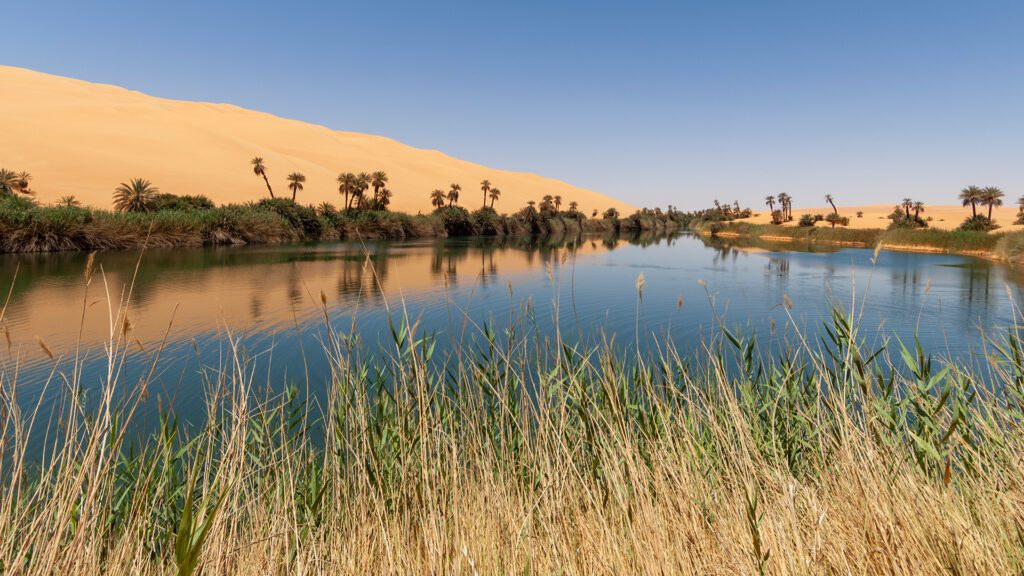The World Food Programme estimates that «at least 44 million people in 38 countries are teetering on the edge of famine» since Russia invaded Ukraine in February 2022. The two countries are major exporters of agricultural commodities. Africa and the Middle East are among the hungriest regions of the world. To avoid threats to global food security, in May 2022 Russia, Ukraine and the United Nations began to open “Solidarity Corridors” to facilitate the export of grain from Ukraine’s ports to the rest of the world. The so-called Black Sea Grain Initiative – a diplomatic initiative led by the UN and Turkey that allowed the export of grain, flour and other products from Ukrainian ports – dates back to 22 July 2022 and ended on 17 July 2023, after the Kremlin’s decision to «suspend» the agreement. The potential consequences of this move on the agricultural goods market are still uncertain: there is a risk that prices will start to rise again.
The article in a nutshell
Libya was among the recipients of agricultural shipments within the Black Sea Grain Initiative. The country’s food supply depends on imports
Fezzan is the vast Southern region where the Libyan government is seeking to increase agricultural production. Traversed by migrants, militias, terrorist groups and local tribes, it lies at a crossroads between the Sahel and the Mediterranean
Several cooperation projects, some of which led by Italy, aim to boost agriculture and employ migrants in the fields
In May 2023, several people linked to Ara Pacis, an Italian NGO involved in an agricultural project in the area, were detained and later released by a Libyan militia on charges of embezzlementThey had allegedly turned a farm into a migrant centre. Libyan militia ISA has been accused of torture and arbitrary detention
Ara Pacis has been particularly active in southern Libya in peace-building processes since Marco Minniti became Interior minister in 2017. Many initiatives are supported by groups such as Luiss, Eni and Terna, but their results are unclear
Since 2019, the interests of new emerging militias in Libya, such as the Tariq Bin Ziyad (TBZ), led by General Haftar’s son, have also focused on the south
According to the UN portal, which monitors the effects of the Black Sea Grain Initiative, a total 32.8 million tonnes of corn (51% of the total), wheat (27%), sunflower meal (6%), sunflower oil (5%) and other agricultural products (11%) were exported while the programme was in effect. The main destination countries for cargo were China (8 million tonnes), Spain (6 million), Turkey (3.2 million) and Italy (2.1 million). At the bottom of the list were countries at severe risk of food insecurity, including Libya, which received around 560 thousand tonnes of products from Ukrainian ports. In the North African country, agriculture accounts for 1.3% of GDP and only 12% of its 15.4 million hectares of land is arable. Libya relies heavily on imports (up to 90%) for its cereal consumption. According to data provided by FAO in its 2022 Global Information and Early Warning System Country Brief, «[b]etween 2016 and 2020, the country sourced over 30 percent of its wheat imports from Ukraine, and 20 percent from the Russian Federation».
Fezzan grain
To limit dependence on foreign countries, the National Unity Government in Tripoli stressed the need to focus on activating public-private partnerships to increase domestic agricultural production, but according to FAO data, «[a]lthough 470 000 hectares are suitable for irrigation, only some 240 000 hectares are currently irrigated due to concerns over the depletion of underground water».
Some of Libya’s main agricultural areas are located in Fezzan, a 550,000-square kilometre region bordering Chad, Niger and Algeria. Over the years, it has been traversed by sub-Saharan migrants to Libya’s coastal cities, militias engaged in civil war, jihadists and criminal groups, as well as by the tribes (both nomadic and settled) that have always inhabited it. Earlier in June, the European Union launched an assistance programme for 21 municipalities within Baldiyati, a project financed with €72.6 million from the Trust Fund for Africa. First launched in 2018 to promote development and employment opportunities in different areas of Libya, the project was meant to benefit 3 million people, according to its implementers: UNICEF, the United Nations Development Programme (UNDP) and the Italian Agency for Development Cooperation (AICS).
Between 2021 and 2023, AICS also implemented EWA4E, a 300,000-euro project jointly managed with CIHEAM, the International Center for Advanced Mediterranean Agronomic Studies. The initiative aims at improving the living conditions of the Fezzan population through better management of energy and water resources and an assessment for the reactivation of agro-food facilities to enhance local employment.
CIHEAM Bari is also involved in the 2-phase project Enhancing Farming Employment for migrants in Fezzan (EFEF and EFEF Plus), alongside Ara Pacis, another Italian NGO. The project’ goal, among others, is to employ migrant workers who cross the region in an attempt to reach the Libyan coast and then sail for Europe. The programme EFEF Plus, which will conclude in December 2024, has received 5 million euro from the Africa Fund, first established by the 2017 budget law, with 200 million euro allocated for «extraordinary interventions aimed at fostering dialogue and cooperation with African countries of primary importance for migration routes».
The ISA crackdown in Sebha
The Africa Intelligence website reports that in May 2023 «several people linked to Ara Pacis» were detained and released in Sebha, the historic capital of Fezzan, on charges of embezzlement. The detention was allegedly conducted by the Internal Security Agency (ISA), a police force made up of civilians aiming to «preserve the entity of the state, protect its political, social and economic security, and combat terrorism, destructive phenomena, dangers and threats that target its religious and social values and undermine its standing or its international relations».
IrpiMedia is free.
Donate and help us provide the kind of journalism you expect
Source link : https://irpimedia.irpi.eu/en-libya-battle-of-fezzan/
Author :
Publish date : 2023-07-17 07:00:00
Copyright for syndicated content belongs to the linked Source.
